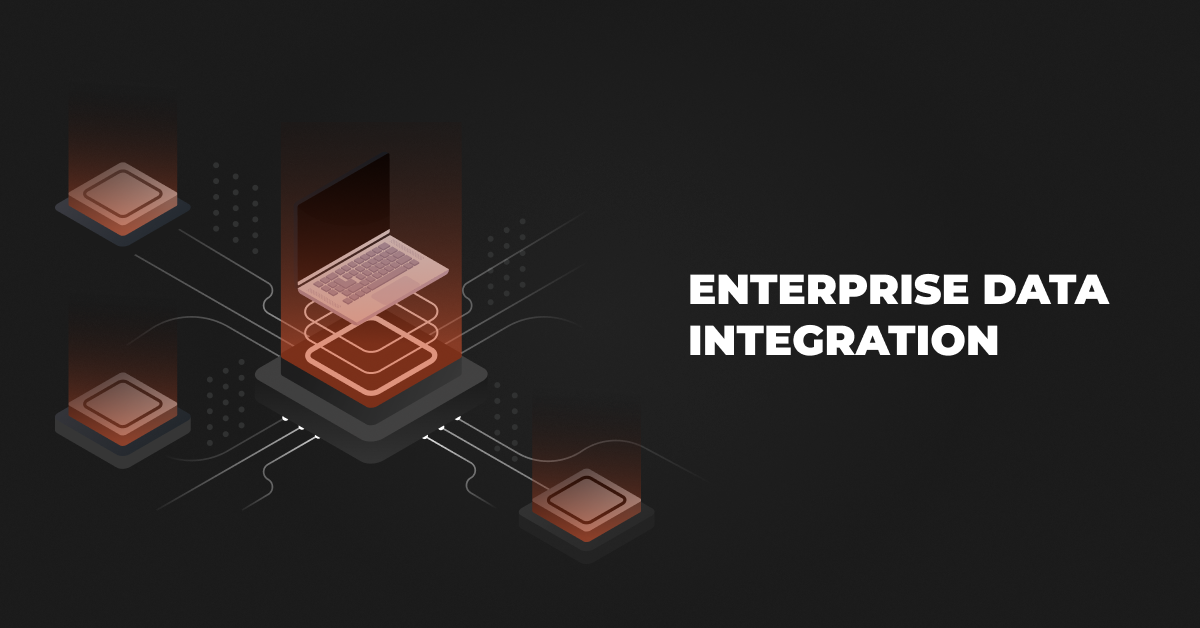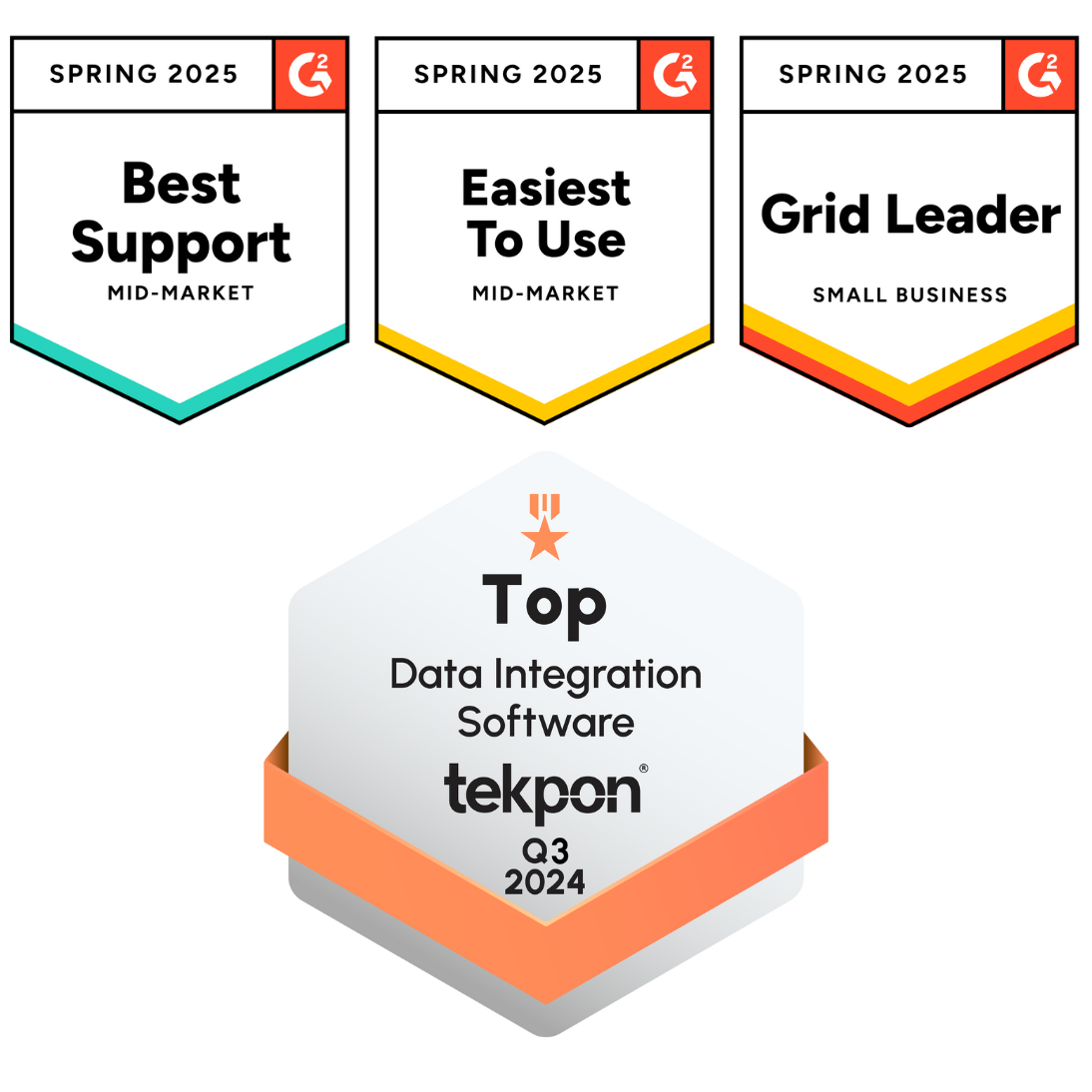Data sources are now everywhere. Businesses or organizations depend upon data for optimized workflows and to make informed decisions. This data is found in various formats, systems, or platforms. The integration of data from various sources provides a better unified view and accurate analysis.
In this blog, we cover various aspects of data integration, its importance, benefits, process, types of tools used, and potential challenges.
What is Data Integration?
Data Integration combines data from various sources and provides unified information, usually from a single source of truth.
In this process, scattered data otherwise in silos is retrieved and made available to users on their preferred platform. This may be designed to mitigate the need for manual updates from one platform to the other or to provide a more cohesive view of an organization’s operations.
Difference Between Data Integration, Application Integration, and ETL
The major function of Data Integration, Application Integration, and ETL is to gather information from various sources. But they also differ from each other in intent and execution. Here are some key differences:
| Features | Data Integration | Application Integration | ETL/ELT |
| Scope | Combines data in the form of databases, files, and systems. | Connects specific applications and systems within the business. | Moves specific to data warehousing workflows. |
| Activities | Involves data extraction, transformation, loading data, quality of the data, distribution, virtualization, and management. | Connects multiple software applications and enables them to seamlessly share data and run processes together. | Mainly focuses on extracting, loading data, and transforming it. |
| Data Volume | Handles small to large data volumes. | Handles small to large data volumes. | Handles high-volume data. |
| Examples | Informatica, SnapLogic | DCKAP Integrator, MuleSoft Anypoint Platform | Fivetran, Qlik |
Also see: Data Integration vs Application Integration Explained
How to Integrate Data From Different Sources
Data integration from various sources may seem daunting initially. However, the right planning and taking some key steps can make this process much easier. Here is the step-by-step process to integrate data from different sources:
1. Define the Objective & Plan Comprehensively
Before starting the integration project it is important to set the goals and objectives. This intended outcome would need to be realistic, also factoring budgets, current challenges, and future intentions to scale.
2. Confirm Systems To Be Integrated
After setting the goal the next process is to confirm or identify the source of your data. For example: if you want to integrate data from a CRM (Customer Relationship Management) system to your ERP: in which case the method and intended data needing to be moved may be different than in the case of connecting the ERP, ecommerce platform and PIM. It is also worth considering if the flow of data would need to be singular or bi-directional.
3. Choose an Integration Method
Various data integration techniques are used by the professionals. Among them there are five key data integration techniques:
- ETL: ETL refers to Extract, Transform, Load. This is a traditional integration method that extracts the data from the sources, transforms it, and then loads it to the central repository.
- ELT: This is a modern method that leverages the power of cloud-based data warehouses for data transformation. Unlike ETL, ELT refers to Extract, Load, and Transfer, which means that first it extracts the data, loads it to the data warehouse, and then transfers it to the repository.
- Data Federation: This data integration method combines the data from the sources without physically consolidating into a single repository.
- Data Virtualization: This unique method allows the users to access and query data in real time without moving it from the original position.
- API-Based Integration: API (Application Programming Interfaces) facilitates data exchange between different systems and applications. iPaaS, and ERP integration platforms fall into this category of integration methods.
- Custom Integration: A custom integration tool allows the development of connections between various data sources. This connection provides better flexibility and control over the data. It also enables the users to create a specific data integration process that caters to unique business needs.
5. Test Thoroughly
Work with your team and vendor to ensure that the integration is tested for the various use cases. It would be best to include those interacting most with the integrated systems to troubleshoot any potential issues well in advance, while gaining employee buy-in into the new technology.
6. Continuous Monitoring & Updates
After following all the above make sure to monitor the extraction process continuously. If any issue arises in the process it can be solved immediately.
Challenges While Integrating Data Sources
There are various challenges that many people face during data integration.
- Unoptimized Data: Data optimization refers to proper and accurate analysis and making the process as cost-effective as possible.
- Legacy Systems: The data integration method requires some legacy systems like data integration tools. These tools integrate the data into the repository or database. This is an important step and cannot be skipped.
- Data Compatibility: The data taken from various sources contains different definitions and nomenclature. So, it is important to clean up the data by using the process of data transformation. The process will help in making data that is compatible with the system.
- Large Data Volumes: This process demands handling a large amount of data from multiple sources. It can be highly processed and computationally intensive sometimes.
Benefits of Integrating Data Sources
There are various benefits that the process of data integration brings to the table.
- Improves customer insights: The process of data integration provides you with a 360-degree view of the customers. By providing customer data from various sources.
- Enhances collaboration: Data integration provides access to the same, up-to-date data to everyone in the organization in real time. This enhances the collaboration among the team.
- Saves time: The data integration saves a lot of time as it removes the extra process of manual data transfer from system to system.
- Increases data accuracy: Reduced manual updates also leads to a significant reduction in human errors within the data including inaccuracies, spelling errors, or missing and duplicate information.
- Saves Money: The data integration automates the manual data entry process and eliminates the process of manual data entry and reconciliation.
- Unified data: Instead of visiting various data sources the process of data integration brings all the diverse data to create a single source of truth.
- Informed decision-making: The unified data helps with viewing your business more cohesively, allowing leaders to spot both challenges and opportunities more accurately and make strategic decisions.
DCKAP Integrator: How Manufacturers & Distributors Can Integrate Data From Different Sources
DCKAP Integrator makes systems talk to each other. It’s an ERP integration platform built for for manufacturers and distributors, built to optimize operations and create smoother customer experiences for their customers. Businesses use DCKAP Integrator to connect their ERP, ecommerce, CRM, PIM, EDI, and more.
- Robust features that make for an easy to use tool such as the advanced mapping and modifiers, workflows, logs, and more to simplify integrations.
- Backed by a team of experienced experts who can handle deploying the integration, if needed, along with any customizations that may be needed.
- Specialized to work with the systems and requirements preferred by manufacturers and distributors: whether on new-age solutions or working with legacy systems.
Schedule a chat with our integration experts to see if DCKAP Integrator would be a good fit for you, or check out our transparent and flexible pricing plans.
Conclusion
The process of data integration plays an important role in building an organization or business. As it cleans and transforms the required in the database. The process is not as challenging as it seems. Just the usage of the right tools, techniques and sources of information must be well known.
Note that a nicely executed data integration has the capability of transforming raw into actionable insights. A good hand in this process can help the organization or businesses in decision-making, enhance innovation, and position themselves for a long-term run.
Frequently Asked Questions
How to connect data from different sources?
Connecting the data from various sources you need to follow some steps. First, you must identify the data sources to ensure the quality of the data and choose a data integration method. Now clean the data by using tools and techniques like ETL processes to extract, transform and load the information.
What is the integration of data from multiple sources?
The data integration method is a process where the information is collected for the organization from various sources. This information is then converted into a unified dataset which allows a comprehensive view of the information. This process is known as the integration of data from multiple sources or “data integration”.





